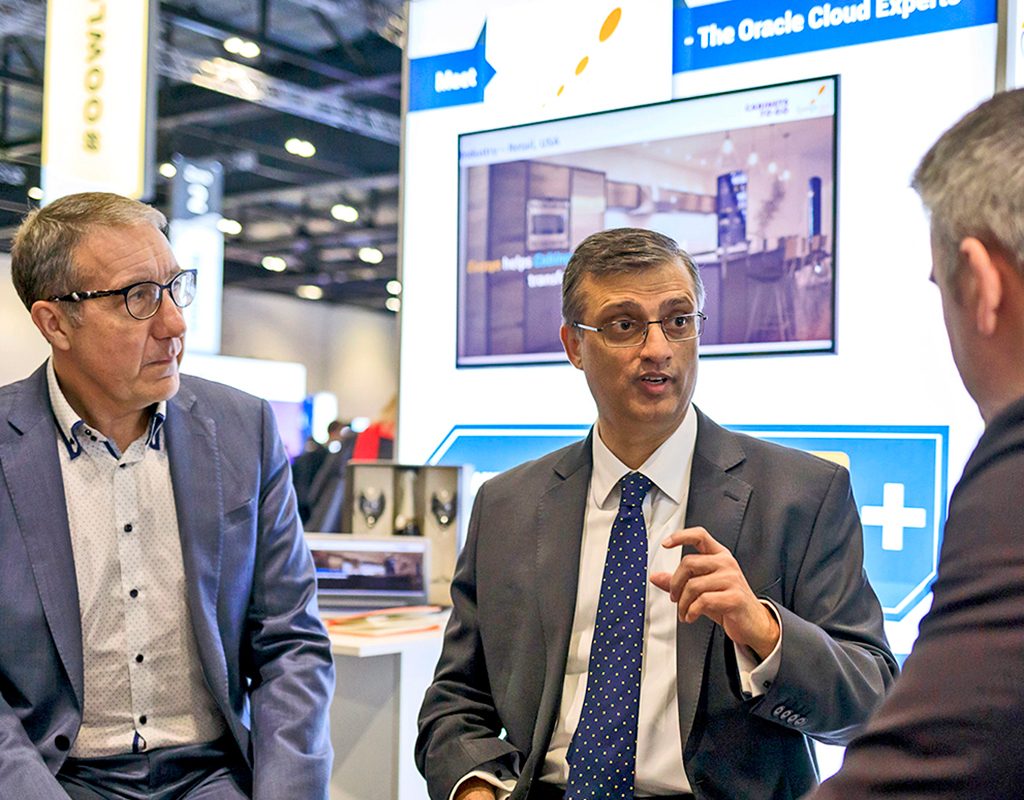Throughout 2020, ERP Today will be tracking the fortunes of M Group Services as they transition from a multitude of legacy systems to the Oracle cloud. With unprecedented access to the inner-workings of an enterprise level project, ERP Today will chart the progress of the project with four detailed reports – the first part of which includes the business case rationale, vendor selection, implementation partner selection and contract negotiation (procurement). Graeme Cross (project director) and Martin Beesley (CFO) spoke exclusively to Paul Esherwood about the business case for the project, the considerations in selecting a vendor and implementation partner, and set out the predicated benefits of a significant investment in new technology and infrastructure.
M Group Services (MGS) is the holding company that umbrellas the activities of more than a dozen utilities, engineering, infrastructure, transport, and telecoms entities. It is a private enterprise, owned by PAI Partners since 2018 and has grown significantly through a series of acquisitions. Group revenues top £1.2bn and it directly employs more than 9,000 people along with a further 9,000 contractors.
ERP Today has been on the look-out for a suitable candidate for this four-part case study for a while. Following the highs and lows of an ERP project will give other ERP customers valuable insight into the decision making processes behind each stage of the journey and hopefully offer-up some important lessons that they can take into their own projects.
However, my initial thought was MGS would be unlikely to have the ingredients to make for a great project or a compelling story. The history books are bursting with failed IT projects in this sector and the evolving shape of MGS, as it continued to make acquisitions during the project, meant that it had the potential for significant complexity. The board is hardly a picture of diversity and it’s not uncommon for businesses that traditionally ‘do stuff with their hands’ to have fairly luddite views. Not exactly the recipe for progressive and dynamic decision making. Or so I thought.
The reality at MGS could not be further from my original misplaced conceptions. The management team exhibit all of the characteristics required for a successful enterprise transformation project and they have approached the initiative with openness, modesty and a clear vision from the start. If they didn’t know something they admitted it and found someone they could trust to advise them. They went out and spoke to other CxOs who had been in similar situations and asked for advice and tried to learn from their experiences; they brought in external experts to help shape and define the programme and governance structure; they partnered with an organisation that could provide insight into the inner-workings of the technology vendor to ensure they got the best deal; and they engaged with market leaders to tackle each element of the project.
We were moving from a burning platform – we knew we had to get off our finance, hr, and payroll systems
Lumenia is an expert authority on vendor selection, programme governance and project planning. Evosys has brought more customers to the Oracle cloud than any other partner globally. Egress has completed more successful DM projects than any other data migration specialist in the UK. And finally, in Searchlight, they found a partner that understood Oracle and its intricacies helping them shape an agreement that provided the flexibility it needed to deal with an evolving landscape.
Ultimately we found a partner in evosys that really understood what we were trying to do
Buy-in for the project
Without buy-in from the top your project can’t succeed. And if you don’t win hearts and minds with the rank and file you are investing in something that will never reach its potential. Engaging stakeholders at the earliest phase will ensure that your project has the momentum it needs to power through the difficult moments and MGS identified this from the outset and ensured that the project had the full weight of its employees behind it.
Beesely said: “We were moving from a burning platform – well, almost burning platform. We knew we had to get off our finance, HR, and payroll systems so the business case was really won on that alone. But we didn’t feel that was good enough and we wanted to add more value into the business case. The stakeholders from within the business were involved early so they didn’t perceive this as something that has been to done to them. They’re actually part of it. The focus has been about reducing the admin burden, providing better reporting, an increased focus on value-add activities. All the things that most stakeholders and users really appreciate.
“We’ve done quite a lot of workshops to move people from ‘we can’t because’ to ‘we could if’ and in some cases it’s been quite stormy, but ultimately they accept that the system is the system. It’s a standard process. It works in a way that is considered best practice and they understand what they need to do to adopt that process.”
Legacy landscape
MGS’ legacy landscape included a core Mentor solution for finance, HR.net for human resources and payroll and a collection of other products and platforms that had been integrated and bolted on either through acquisitions or to enhance the core applications. The Mentor system was more than 20 years old and over time, like many other legacy systems, it had been heavily customised. Significant technical debt had built up and MGS was struggling to get any value from it.
The HR.net solution was also more than a decade old and it too had become weighed-down by an escalation in data volumes and an increasingly complex payroll. ADP acquired HR.net back in 2010 and all but stopped investing in the platform shortly after. With no new functionality on the horizon and a solution that was barely able to keep pace with the business demands, MGS decided that it would look for an integrated HR and finance provider to deliver its future technology platform.
Cross said: “Most of the group was using finance systems that were twenty-five years old. It was literally a green screen that they’d made work on a PC, so it doesn’t even work with a mouse, but it did the job for us and we used that for payroll too. We could have done upgrades on Mentor but there wasn’t an upgrade HR.net. We realised we were on very old legacy systems that wouldn’t support ambitious growth and it would be a backward step for most of the companies that we were acquiring to put them on our failing platforms.
“In December 2017 I got board approval to go ahead and review the market place. We engaged with Lumenia early and they worked with the businesses to help shape the requirements. They ran a series of workshops long before the tender process and that helped identify other opportunities where the proposed new technology could add some additional value.”

In addition to the finance and HR solutions MGS also runs a number of other systems that support workforce management, work scheduling, fleet and asset management, and stock management. The decision was taken early to leave these non-core systems out of the scope of the new ERP in order to ensure that the core solution was delivered as quickly as possible and with minimal disruption to the business.
That has been invaluable as we haven’t got any wastage and we won’t be paying for stuff that we’re not using
Too often, ERP customers (especially ones that have not taken on an enterprise-scale project in the past) rush to replace everything at once – usually on the advice of the vendor who is all too keen to sell the full arsenal on day one. A circumspect approach to deciding what is in scope and what is out of scope is a key milestone in building a solid business case and project plan and MGS’ decision to focus on ‘what is most important’ is a lesson many other ERP customer can learn from.
Vendor Selection
In some cases the vendor choice is somewhat determined by the type of business sector in which you operate. In other cases there will be a much broader set of applications that could be suitable. MGS is pretty much in the middle of both scenarios. It is an enterprise with sales of more than £1bn so it is likely that some of the smaller vendors would not be able support all of the business’ needs. It is vertically focussed to an extent but it isn’t a pure play telco or utilities business where the options may be more defined. MGS needed a technology partner that could meet the broad operating units’ requirements, provide the scale that supported its growth ambitions, and implement an integrated solution. They chose Oracle Cloud Applications.
Cross said: “We did a beauty parade, took references, and did all the usual things you have to do. We filtered it down from a long list to a short list of two, IFS and Oracle. In the end we went with Oracle because it was an integrated platform. IFS came in with CoreHR and did a great job, a very good job individually, but they didn’t convince us that they would work together during the implementations to make the join seamless. I felt that would remain our problem to effectively get two suppliers to work collaboratively together and I thought that it might actually result in delays to the implementation.”
Implementation partner
Choosing an implementation partner is a bit like getting married. It used to be that the technology partner was your spouse but today they are more like your sibling – it’s a lifelong commitment and you are unlikely to ever build a rational business case for switching sides. Whereas your implementation partner is someone you will do your best to get on with but you know there are other options if things don’t work out. That said, like in marriage, choosing wisely is at a premium – making a mistake with your implementation partner can be costly in terms of time and money. Continuing the relationship theme; it’s all about culture and fit. You have to find a partner that talks your language, that you get on with, that understands you, and ultimately makes you happy. All of the SIs offer a good service – some are differentiated by unique specialisms – but in the main they all do the same thing, just in slightly different ways. Anyone who has had more than one relationship in their personal life will understand the analogy. Think carefully about who you choose to lie down with. The technology always works but it’s the magic between the customer and the partner that often determines success or failure.
If you’ve not done it before it can be a daunting prospect negotiating a deal with one of the world’s biggest tech companies
Cross said: “Originally we were going to go with Inoapps. They’d been introduced to us by Oracle so they were the package. Evosys came in December 2018 and it was a recommendation that I got from another CIO who had been involved with a large Oracle project. The main complexity was that we pay 9,000 contingent workers. We have CIS and difficult taxation to deal with and Oracle out of the box doesn’t support that very well. We needed an extension to deal with it; Inoapps had a solution and Evosys had another. We set out all the pros and cons in a document and circulated to our key stakeholders and it was pretty much unanimous. I was quite surprised, but then the two methodology were very different as well. Inoapps did a great job but ultimately we found a partner in Evosys that really understood what we were trying to do. Their approach of putting ‘boots on the ground’ gave our FDs and senior stakeholders the comfort they needed and it’s been a great collaboration so far.”
Contract negotiation
It’s very common for the bill of materials (BOM, the document that sets out what you agree to buy from the vendor) to include all of the licences and environments that you will need at the peak of utilisation. In reality, that peak may never be reached or it will be a slow process ramping up to it. Customers that do not include some flex in the BOM will most likely end up paying for everything from day one and if the scope changes and you need to buy more of something you will still have to pay for the stuff you aren’t using. Remember, you don’t pay for what you use you pay for what you provision. Dealing with any technology vendor can be challenging, and with Oracle even more so than others. They are hardened sales professionals that are expert at selling as much of their kit as possible. That doesn’t mean you don’t need their kit or they are mis-selling their products, but as you can read in the aforementioned article on vendor selection ‘you will be dealing with professionals who sell to people like you every day – and they’re very good at it’.
Cross said: “We engaged another external expert, a company called Searchlight, to help us navigate the contractual negotiations with Oracle. If you’ve not done it before it can be a daunting prospect negotiating a deal with one of the world’s biggest tech companies. They knew where the bottom was in terms of price and came up with some things that I wouldn’t have thought about putting into the contract. We’ve negotiated the right to tear up the bill of materials in favour of a ‘price holder’ which effectively means we commit the same amount of money but we can flex how we spend it.
And for us that has been invaluable as we haven’t got any wastage and we won’t be paying for stuff that we’re not using. If you’ve not dealt with Oracle before all of the modules can be baffling. I know what I want to get out of it as a business but what do I actually need? Having Searchlight help us navigate that and say, ‘right, okay, I know exactly what you do and don’t need’ has been invaluable.”
What has been achieved so far
As far as foundations go, MGS has made a tremendous job of setting themselves up to succeed. I phrase it that way because all too often new ERP customers stack the deck heavily against themselves by making fundamental mistakes from the outset. As Tom Calder sets out in his excellent ‘The ERP Jungle’ article elsewhere in this issue, following some basic steps, having a set of guiding principles – and sticking to them – is the bedrock of success. Rushing in, not gaining executive sponsorship, inadequate documentation, poor contract negotiation, lack of engagement from within the business, and dare I sat it – ego, are all basic issues that thwart many projects.
To date, MGS has run more than 83 design workshops, nearly 150 CRPs (conference room pilots – meetings used to test scenarios for the new solution) and involved more than 200 employees in the decision-making processes. At the time of the first interview they had met all of their milestones and were underway with the design phase of the project. By the time you read this, save for any disasters, some of the functionality will already have been built and in a few short weeks the first phase of HR and payroll will start to be rolled out into the business.
In the next instalment of this series we will look more closely at the second key stage in any ERP project; requirements and design. Whilst
many of the high-level requirements for the overarching solution will already have been identified – in fact they will have been determined in the original business case – the gathering of functional requirements is a different story altogether. We will get much closer to the Evosys team over the next few weeks and interrogate their approach to the design phase. Tune in next issue for an update on the progress and observations on the next critical stage in MGS’ journey to the Oracle cloud.




